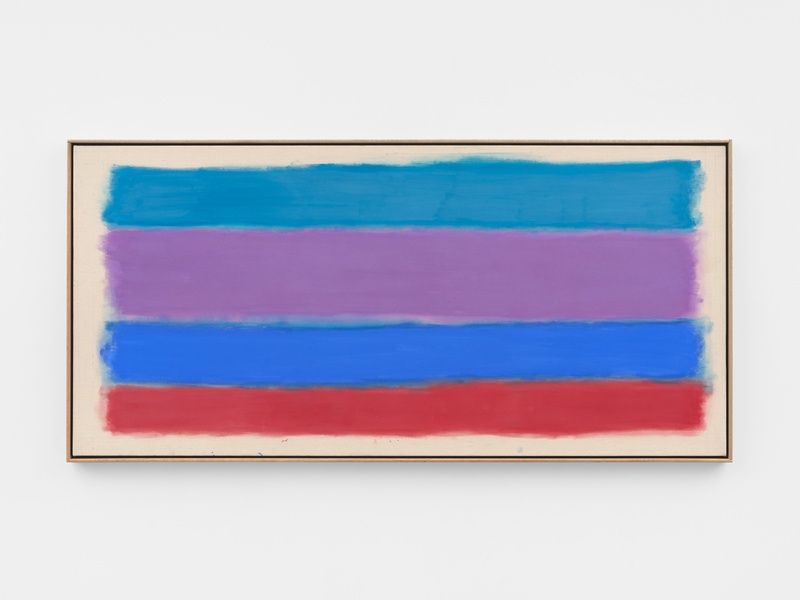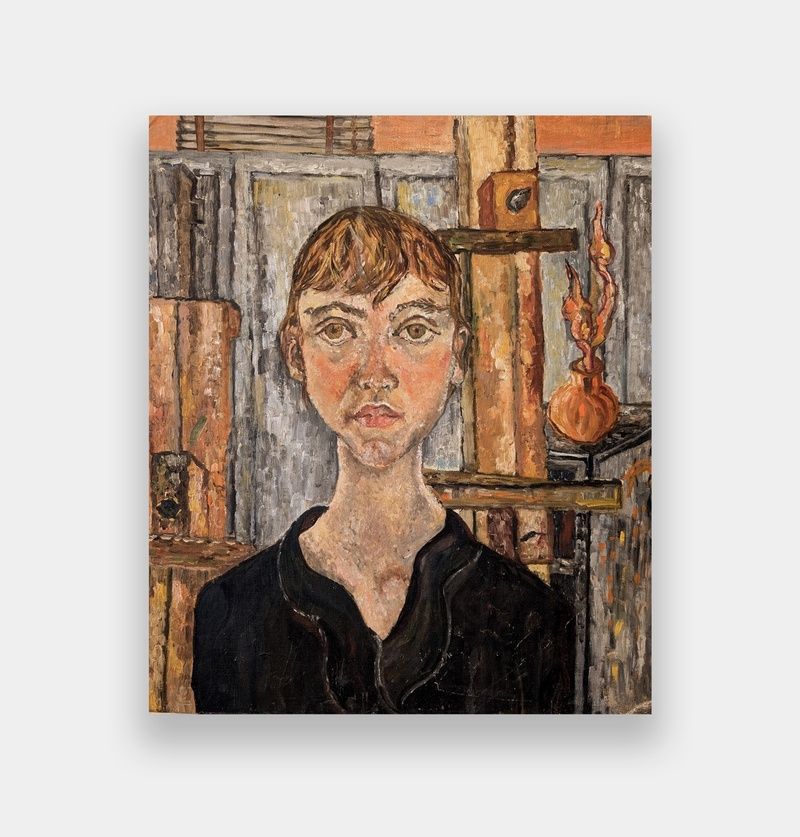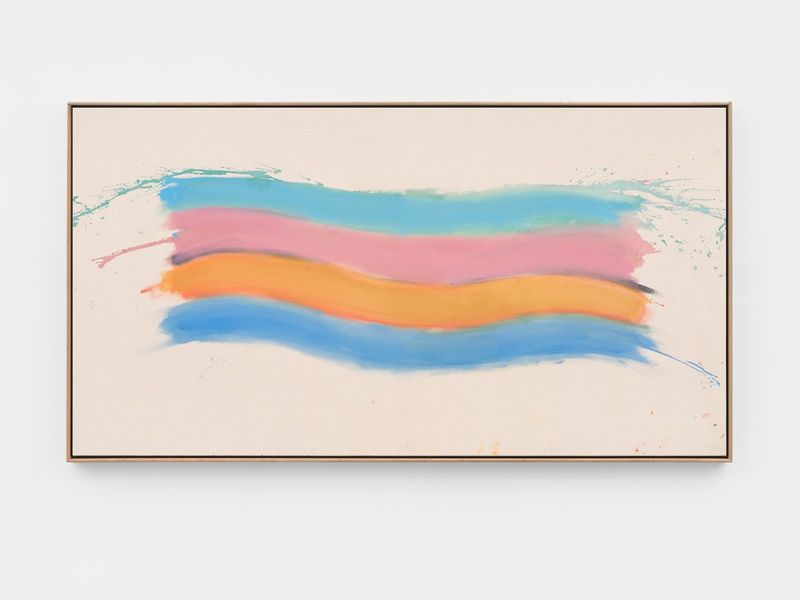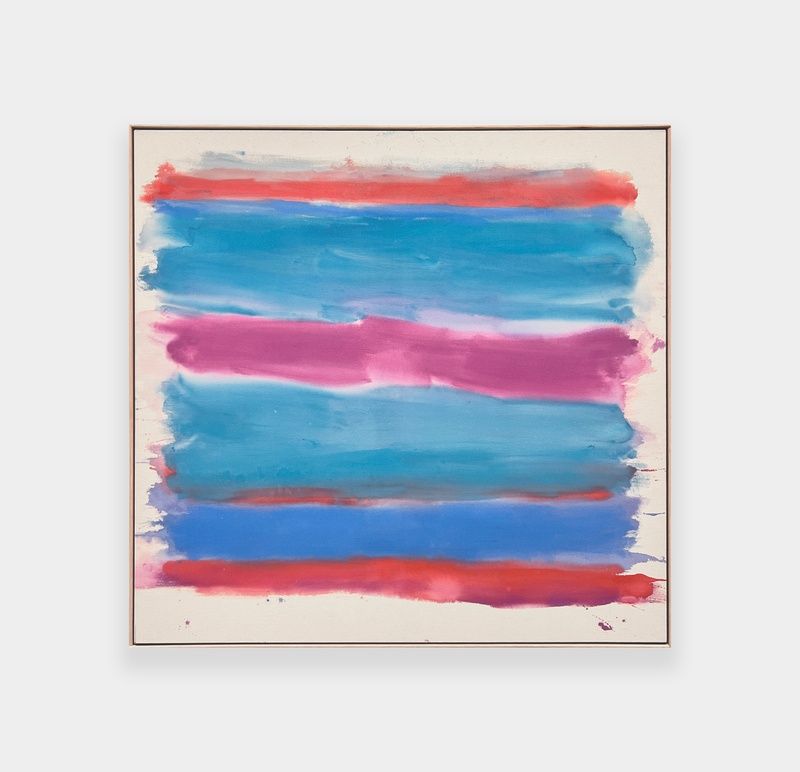James Fuentes Gallery
Pat Lipsky
Color Next to Color
Opening reception is Thursday, October 9th from 6–8pm.
“Color and I are one. I am a painter.”—Paul Klee
James Fuentes is delighted to announce Pat Lipsky: Color Next to Color. The exhibition presents a new series of paintings created between 2023 and 2025 alongside a selection of formative early works—including compositions from 1968 titled after mathematician and early computer scientist Alan Turing, two stain paintings from 1971, as well as a rare self-portrait in the studio painted at age 17—many of which never been publicly exhibited. As this exhibition reflects, while Lipsky is one of very few living women artists from the second generation of Color Field painters in New York, she remains remarkably active in the studio today. The exhibition coincides with the release of the artist’s memoir, Brightening Glance: Recollections of a New York Painter, published by the University of Iowa Press.
The exhibition’s title, Color Next to Color, articulates a kind of manifesto to Lipsky’s work, which reflects a lifelong fidelity to color in painting as a pure and exacting pursuit. Lipsky’s approach is rigorous and material-bound, grounded in color’s intrinsic properties and her direct negotiations with them. In her paintings, chromatic bands represent an active, dynamic force that unfolds in the optic field as Lipsky places colors in close proximity. Like syllabic repetition in text, Lipsky calibrates similar and slightly different colors in relation to each other, performing a kind of visual assonance that creates tension. Revealed rather than constructed, the resulting compositions assert new coherence.
A lifelong New Yorker, Lipsky is celebrated for her contributions to Color Field painting and lyrical abstraction, dating back to her first solo exhibition at André Emmerich Gallery, New York in 1970. She emerged in late-1960s New York at a moment when artists were increasingly occupied with the world of color at the same time as new intersections were emerging between art and science. In the context of the enthusiastic introduction of new media into art, painters like Lipsky who remained dedicated to the medium asserted compelling correspondences for using science as a basis for making paintings. Her 1968 Turing works are characterized by parallel and repeating waves laid down in an all-over saturation of color alongside like color. Manipulated transparencies of color prompt secondary chromatic mirages in the viewer’s eye—demonstrating Lipsky’s early and lifelong preoccupation with color’s physical presence.
The 1968 Turing paintings thus represent an origin point for Lipsky’s oeuvre. Following breakthroughs in logic, algorithmic computation, and codebreaking, Alan Turing’s final published work explored the mathematics of morphogenesis: how patterns in nature, like wave-like structures in fluids, emerge from systems in motion. A similar notion of dynamic patterning animates Lipsky’s early canvases; and indeed her most recent. Spooky motion at a distance (2025) nods to Albert Einstein’s personal description of quantum entanglement, a sense of correlation or influence between two things placed apart, again describing the activity of color in Lipsky’s paintings. In another title play, Emanate (2025) responds to the relationships between two different blues found in Edouard Manet's Boating (1874). Ynrevig (2025; a reference to Claude Monet’s “Giverny,” in reverse) introduces for the first time a double composition, like Monet’s garden bridge transformed by its shifting impression in busy water beneath.
In addition to her signature wave form, two works from 1971—Winter and Immirem-Immimo—bring focus to her stain paintings, further expanding our perspective on Lipsky’s oeuvre in relation to its very beginnings. In these, washes of color again settle into radiant parallels yet remain horizontally “straight,” establishing an all-over rectangular composition in counterpoint to the free-floating undulating curve. Here color coheres dimensionally to suggest a horizon line stacked with a smog line, or light pressing through an obstructed window. Recent iterations like Dream (2024) and True Colors (2023) further clarify these optical effects through solidifying bands of like color held apart by slim zones of contrasting hues between them. Lost Painting (2023) more literally reimagines an early composition, since lost (seen today only in photographs).
Throughout, Lipsky’s works carry forth a concomitant seriousness and self-aware playfulness. Her deliberate implementation of a border space rendered in raw canvas emphasizes painting as a commitment to a clear, distinct, and contained space. Up close, the lingering presence of pencil marks further impart an awareness of the object as it is—an extension of Lipsky’s purist commitment to painting—telling the viewer where the picture begins and ends. Together, Lipsky’s references parlay a deep engagement with art history as much as the world at hand. Yet her true motivation remains color itself.
Pat Lipsky was born in 1941 in New York City, where she continues to live and work. She earned a BFA from Cornell University in 1963 and an MFA from Hunter College in 1968. Her work has been the subject of solo exhibitions since 1970 and is represented in numerous public collections, including the Whitney Museum of American Art, New York; Brooklyn Museum, New York; de Young Museum, San Francisco; San Francisco Museum of Modern Art; Walker Art Center, Minneapolis; Harvard Art Museums, Cambridge; Hirshhorn Museum and Sculpture Garden, Washington, DC; and the Wadsworth Athenaeum, Hartford. Color Next to Color follows the gallery’s first exhibition of Lipsky’s work earlier this year in Los Angeles.

Dream, 2024
Acrylic on canvas
38 1/16 × 78 7/16 inches (framed)


